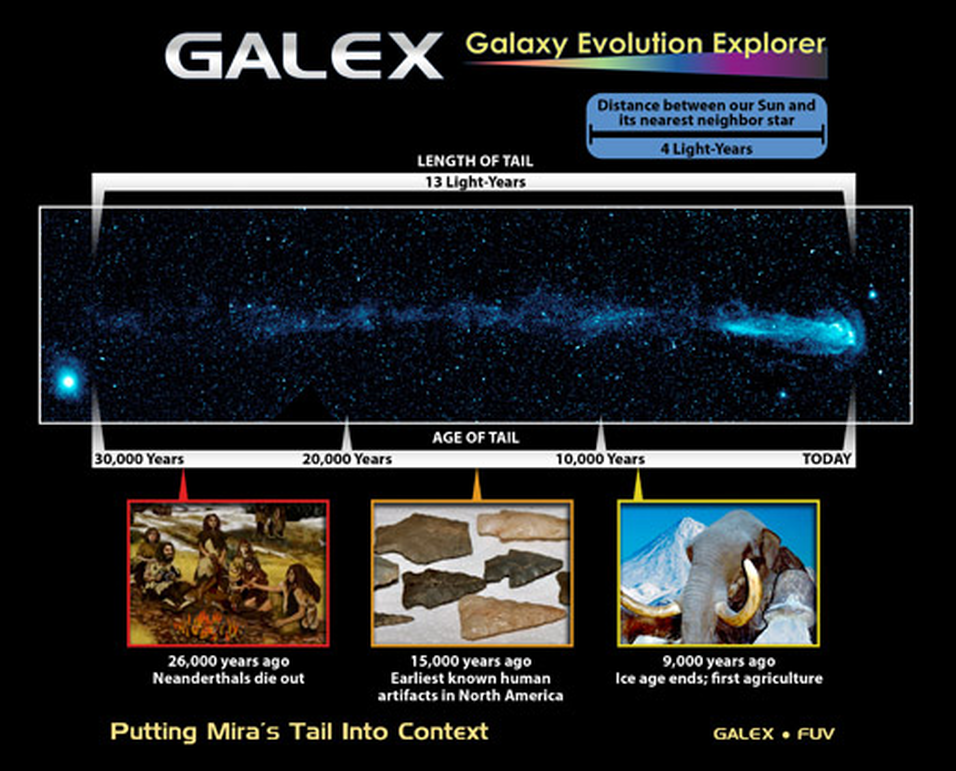MIRA A/MIRA B 400 year Binary Orbit 31/10/07Mira, in the constellation Cetus, is a strange pulsating variable star that fades in and out of view every 11 months. The name Mira means “wonderful”; this star exhibits the largest change in brightness except for novae and supernovae. If you’re keen, you can make your own observations of Mira and contribute to astronomical research.
See more at: http://www.oneminuteastronomer.com/258/mira-wonderful-star/#sthash.chkZOaY1.dpuf MIRA Star traveling 130 Kilometers per Second With Comet Like Tail Stretching 13 Light years 15/08/07
August 15, 2007: Astronomers using a NASA space telescope, the Galaxy Evolution Explorer, have spotted an amazingly long comet-like tail behind a star streaking through space. The star, named Mira after the Latin word for "wonderful," has been a favorite of astronomers for about 400 years, yet this is the first time the tail has been seen.
Galaxy Evolution Explorer--"GALEX" for short--scanned the popular star during its ongoing survey of the entire sky in ultraviolet light. Astronomers then noticed what looked like a comet with a gargantuan tail. In fact, material blowing off Mira is forming a wake 13 light-years long, or about 20,000 times the average distance of Pluto from the sun. Nothing like this has ever been seen before around a star. See more at: http://science.nasa.gov/science-news/science-at-nasa/2007/15aug_mira/ Hurtling Star Mira: Tail Estimated To Contain Material 3000x Mass of Earth: NASA Photo 17/08/07
Explanation: To seventeenth century astronomers, Omicron Ceti or Mira was known as a wonderful star, a star whose brightness could change dramatically in the course of about 11 months. Mira is now seen as the archetype of an entire class of long-period variable stars. Surprisingly, modern astronomers have only recently discovered another striking characteristic of Mira -- an enormous comet-like tail nearly 13 light-years long. The discovery was made using ultraviolet image data from the Galaxy Evolution Explorer (GALEX) satellite. Billions of years ago Mira was likely similar to our Sun, but has now become aswollen red giant star, its outer layers of material blowing off into interstellar space. Fluorescing in ultraviolet light, the cast off material trails behind the giant star as it plows through the surrounding interstellar medium at 130 kilometers per second. The amount of material in Mira's tail is estimated to be equivalent to 3,000 times the mass of planet Earth. About 400 light-years away toward the constellation Cetus, Mira is presently too faint to be seen by the unaided eye, but will become visible again in mid-November.
See more at: http://apod.nasa.gov/apod/ap070817.html |





















